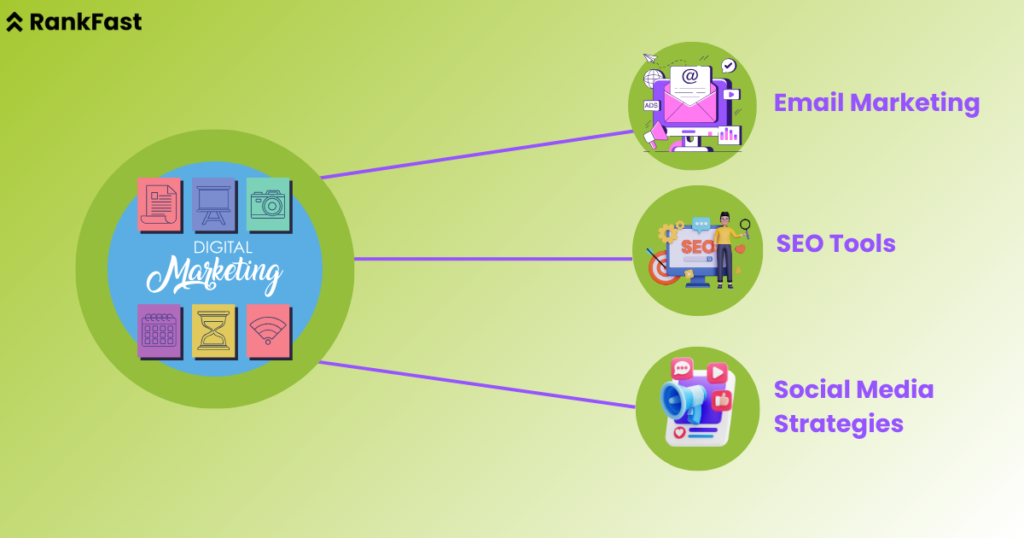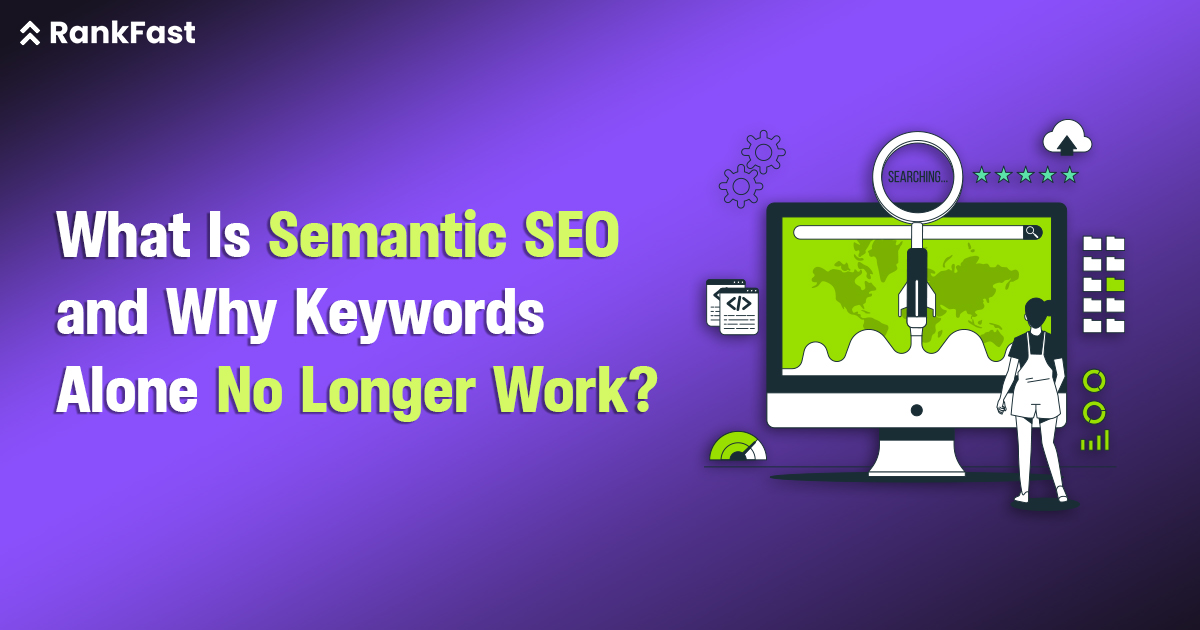Why do so many websites still depend on stuffing keywords and repeating phrases? Because they think that’s what Google rewards. But that method is fading fast. Today, users type longer, more specific questions, and they expect accurate answers.
The older SEO models fail here. Microsoft Docs saw a 2.0% rise in CTR using semantic ranking, and 4.5% for long queries, by moving away from keyword-only strategies. In this blog, we explore how Semantic SEO fixes what old SEO breaks.
What Is Semantic SEO?
Semantic SEO is about meaning, not just words. It focuses on the intent behind a search and the relationships between topics, not just exact match keywords. Search engines like Google now try to understand context, synonyms, and user intent rather than count how many times a keyword appears on the page.
Think of it this way, people no longer type “cheap phone India.” They ask, “Which is the best budget smartphone in India for students?” This is where semantic search engine optimization wins.
Instead of targeting only short keywords, Semantic SEO looks at:
- Concepts
- Entities (people, places, brands, etc.)
- Relationships between topics
- Natural language patterns
For example, if your blog is about diabetes, and you only use the word “diabetes” repeatedly without discussing insulin, blood sugar, diet, or exercise, Google knows you’re missing depth.
Entity-based SEO uses tools like Google’s Knowledge Graph. It helps Google understand the web better by connecting data points. Google doesn’t just match text now, it tries to match meaning.
This shift also works well with voice search. With growing voice queries, semantic understanding is the only way to match content with user intent.
This is not an advanced tactic anymore. It’s the foundation of any strong on-page SEO strategy.
Why Keywords Alone No Longer Work
Keywords still matter. But alone, they fail to reflect how users search today. The internet is flooded with content repeating the same keywords. Google had to evolve.
Problems with Keyword-Only SEO:
- Lacks context
- Ignores user intent
- Stuffed pages lower user experience
- Doesn’t align with conversational queries
- Doesn’t handle voice search well
Search engines now prefer content that answers questions fully. A page that ranks well today often covers related topics, explains terms, and offers deep answers, even if the exact keywords appear less frequently.
Here’s a real-world case: if someone types “how to reduce blood pressure naturally,” Google looks for pages that mention not just “blood pressure,” but also foods, exercise, stress management, and maybe even meditation.
So, sticking only to primary keywords creates thin content. It tells Google your site lacks depth.
Also, keywords get outdated. But topics grow. That’s why topic clusters in SEO now replace standalone blog posts. Instead of 20 blogs on “SEO tools,” you build one main page and support it with focused subtopics, like tools for beginners, tools for agencies, etc.
And that’s not all.
Google uses NLP (Natural Language Processing) and machine learning to judge content quality. This includes BERT and MUM updates, which analyze how words relate, not just which ones repeat.
SEO without keywords? Not entirely. But SEO without meaning is no longer an option.
Key Elements of Semantic SEO
Let’s break down what makes semantic search engine optimization actually work. You need the right elements in place to match Google’s expectations today.
| Element | Purpose | Tips |
| Entities | Identify and relate real-world people, places, and things | Use schema, Wikidata, and proper nouns clearly |
| Topic Clusters | Organize related content into silos | One pillar post + several supporting blogs |
| Structured Data | Help search engines understand your content | Use JSON-LD schema markup |
| Contextual Linking | Show how pages connect naturally | Internal links using descriptive anchor text |
| Long-Tail Keywords | Capture user intent better | Use natural questions, not just phrases |
| Answer-Focused Content | Solve problems fully | Include definitions, examples, and tools |
| User Intent Mapping | Match content with what the user really wants | Segment content by search types: informational, transactional, navigational |
These elements guide your on-page SEO strategy. For example, when writing a blog on “best fitness tracker,” include models, prices, comparisons, and benefits, not just repeat the word “fitness tracker.”
Also, keep in mind: semantic SEO is not about guessing. Use tools like Google’s “People Also Ask,” NLP APIs, and schema testing tools to structure your content.
Benefits of Semantic SEO
The shift to semantic methods changes the game. You’re no longer guessing what Google wants; you build with intent and clarity.
Key Benefits:
- Higher Click-Through Rates (CTR): Microsoft Docs saw a jump by using semantic understanding in its system. The more accurate your page is for long queries, the better your CTR.
- Improved Relevance: Content answers real questions. Google ranks it higher.
- Better Content Authority: Covering a full topic boosts domain trust.
- Enhanced Voice Search Match: Works well with natural spoken queries.
- Stronger Internal Linking: Helps users and bots explore related pages.
- Lower Bounce Rate: Visitors stay longer when content solves their problem.
- More Featured Snippets: Semantic structure increases chances of winning position zero.
And here’s the kicker: Semantic pages rank not only for the main term but also for related queries. That means one well-written blog might rank for 100+ keywords without needing to force them in.
It’s also future-proof. As AI grows smarter, only context-rich content will survive.
How to Implement Semantic SEO
Now that you know the theory, how do you actually use it?
Step-by-Step Guide:
1. Start with Topic Research
Use tools like SEMrush Topic Research, AlsoAsked, or AnswerThePublic to find questions, subtopics, and user needs.
2. Map Topic Clusters
Create a pillar page (e.g., “Digital Marketing”). Support it with blogs on topics such as “email marketing,” “content marketing,” etc.

3. Add Schema Markup
Use JSON-LD format for articles, FAQs, and products. Helps Google show rich results.
4. Write for Intent
Focus on the why behind the search. Add use cases, problems, and comparisons.
5. Use NLP Tools
Try tools like SurferSEO or MarketMuse. Optimize for entities and related terms.
6. Create Contextual Links
Link subtopics to your pillar page. Use anchor texts that make sense, not just exact keywords.
7. Update Old Content
Add FAQs, expand sections, and clarify definitions. Improve internal linking and refresh metadata.
Tip: Always structure your headings properly. H1 should be the title, H2s for subtopics, and H3s for supporting points.
Common Mistakes to Avoid
Even smart marketers fall into traps. Avoid these common issues when building your semantic SEO strategy:
- Keyword Stuffing: It still happens. Just don’t.
- Ignoring Entities: Failing to name key brands, tools, or people weakens your page.
- Flat Content Structure: No topic clusters = no depth.
- Wrong Internal Links: Linking random pages hurts context.
- No Schema: Without it, bots struggle to read your intent.
- Skipping FAQs: Missed a chance to rank for long-tail queries.
- Not Updating Content: Semantic content must stay fresh.
And one major mistake? Writing only for Google. Write for the reader. Then optimize.
Semantic SEO rewards usefulness. If your content doesn’t solve something or explain something, Google sees no reason to show it.
Final Thoughts
Semantic SEO is not optional anymore. It’s how search works now. It helps Google understand your content better. It helps users find what they truly need. You can’t just toss keywords around and hope for clicks. You need depth, structure, and clarity.
At Rankfast, we help brands grow with structured, entity-based SEO strategies. Want results? Let’s build smarter content together.
FAQs
1. Is Semantic SEO better than keyword SEO?
Yes. It aligns with how users search now and how Google ranks pages.
2. Can I use Semantic SEO without schema markup?
You can, but schema improves how search engines understand your content.
3. Does Semantic SEO help with voice search?
Yes. It matches well with long, natural, question-based queries.
4. Is Semantic SEO good for eCommerce sites?
Yes. Use it for product guides, comparison pages, and FAQs.
5. Can I update old blogs to add Semantic SEO?
Absolutely. Start by improving structure, adding entities, and internal links.

Leave a Reply